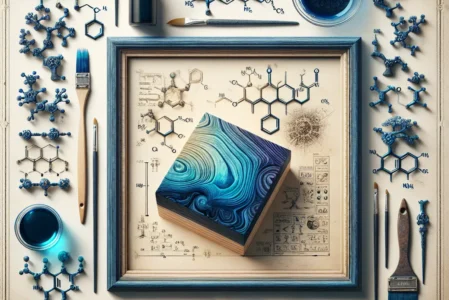The Science Behind the Chemistry of Blue Wood Stain
When it comes to the enchanting world of wood staining, one fascinating aspect that continues to captivate both enthusiasts and professionals is the chemistry behind blue wood stain. The science behind this captivating hue involves the interaction of wood fibers with certain chemicals, resulting in a mesmerizing blue tinge that enhances the natural beauty of the wood. To delve deeper into the intricacies of blue wood stain chemistry and gain insights into its formation, you can explore this informative resource on blue wood stain.
Understanding the Chemical Reactions in Blue Wood Stain
Understanding the chemical reactions in blue wood stain is crucial for appreciating the magic behind this unique product. Blue wood stain chemistry involves a combination of colorants, solvents, binders, and additives that work together to create the stunning blue hue on wooden surfaces. The colorants used in blue wood stain are typically derived from synthetic dyes or natural sources such as indigo, and they undergo complex chemical reactions when exposed to the wood surface.
The interaction between the colorants and the wood fibers is a key aspect of the chemical process. The colorants penetrate the wood and may undergo oxidation, reduction, or complexation reactions to form stable compounds that result in the characteristic blue color. Additionally, the binders and additives in the stain play a vital role in controlling the viscosity, adhesion, and overall performance of the product. Understanding the chemical composition and behavior of these components is essential for formulating high-quality blue wood stains.
By delving into the intricacies of blue wood stain chemistry, manufacturers and consumers gain a deeper insight into the fascinating world of wood staining. Furthermore, this understanding empowers individuals to make informed decisions regarding the selection, application, and maintenance of blue wood stains, ensuring the longevity and aesthetic appeal of wooden surfaces.
Exploring the Magic of Blue Wood Stain: A Chemistry Perspective
When it comes to transforming wood into a stunning visual masterpiece, the use of blue wood stain has the power to evoke a sense of wonder and magic. From deep ocean blues to serene sky hues, the chemistry behind blue wood stain holds the key to its enchanting allure. Exploring the magic of blue wood stain from a chemistry perspective unveils the intricacies of this transformative process.
At its core, the chemistry of blue wood stain involves the interaction between the stain and the wood surface. Unlike traditional pigmented stains that sit on top of the wood, blue wood stain penetrates the wood fibers, creating a durable and long-lasting color. The chemical composition of the stain determines its ability to bond with the wood, resulting in a spectrum of blue shades with varying levels of transparency.
The magic unfolds as we delve into the world of dyes and pigments. Blue wood stains often contain a combination of organic and inorganic pigments, each contributing to the final color and UV stability. Organic dyes, derived from natural sources or created synthetically, offer vibrant and translucent blues, while inorganic pigments provide depth and lightfastness.
Furthermore, the role of solvents and binders cannot be overlooked in understanding the chemistry of blue wood stain. Solvents aid in the dispersion of colorants and facilitate their penetration into the wood, while binders ensure adhesion and uniformity of the stain layer. The selection of solvents and binders significantly influences the drying time, application characteristics, and overall performance of the stain.
As we unravel the chemistry behind blue wood stain, it becomes evident that the magic lies in the meticulous balance of ingredients and their interaction with the wood substrate. From molecular interactions to the visual symphony of colors, the chemistry of blue wood stain adds an extra dimension of fascination to the art of woodworking.

